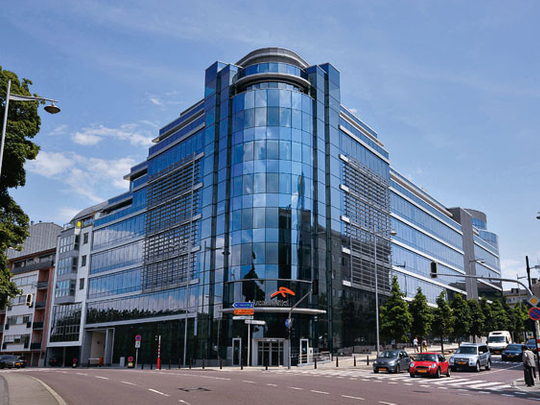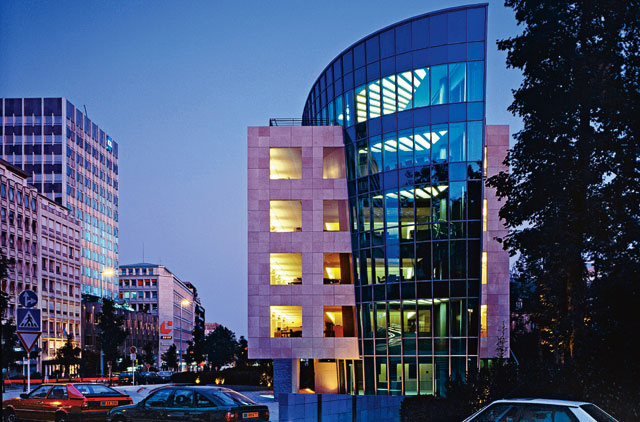
There are perhaps a handful of countries in the world that are considered paragons of societal functionality and organisation — model nations, if you will, which exemplify that balance of free market economics and welfare socialism that aims to maximise the well-being of its citizens. The Grand Duchy of Luxembourg fits snugly into this category. GDP per capita, at more than $81,000 (about Dh297,000), is the second highest in the world according to a 2010 IMF estimate, losing out only to Qatar — a country which unlike Luxembourg is rich in fossil fuels. Incidentally, there is greater income equality in Luxembourg, and the country enjoys a lower Gini coefficient than the gas-rich Gulf state.
The Grand Duchy is a well diversified but highly globalised economy — a fact that has not come without its pitfalls. Firstly, banking is the most prominent sector in the country. Given the recent tribulations of the financial industry and the European continent as a whole, it is not surprising that Luxembourg underwent significant duress in the past few years. In 2009 the budget deficit swelled to 5 per cent as a result of a stimulus package offered to the financial sector by the government (historically, the country’s budget has rarely ever crossed into the red). Though the deficit was pulled back to 1.4 per cent the next year, troubles have resurfaced with the eurozone crisis. Luxembourg is heavily dependent on its neighbours. Called the “Green Heart of Europe,” the landscape is industrialised and hence to a large extent, export-oriented.
Moving back to the bothersome element — the banking sector — Luxembourg happens to be a global leader in facilitating cross-border transactions. On account of the small size of the local market, the country’s financial industry is geared towards attracting foreign capital — an endeavour in which it has done well. According to a recent estimate, there were more than 150 banks in Luxembourg in 2009 employing nearly 30,000 people. As a financial centre, the Grand Duchy has cultivated a model similar to that usually associated with Switzerland — a reputation as a tax haven with protective secrecy laws. It has thrived in this regard. People consider Luxembourg as one of the safest places for their investments — a politically neutral country with a stable and well capitalised economy, in decent proximity to the main financial hubs of Europe.
Grey list
However, as with most perceived tax havens, the international community (namely the US) has led a crackdown on secretive banking practices. This trend has been borne out of a new incentive to curb money laundering terrorism. In 2009 Luxembourg was added to a ‘grey list’ of nations that are considered potential hubs of questionable financing. It goes without saying that reforming the legal structure of the banking industry will undoubtedly make the country less attractive even to the legitimate depositor simply seeking anonymity. However, it should be kept in mind that such reforms are to take place across the board — all ‘grey list’ states are under scrutiny. The new legal landscape does little to deprive Luxembourg of its ‘safe haven’ status — it is very unlikely that nationalisation or a sovereign default will take place. However, even though the country is in the stronger bracket of European nations, its proximity (and currency) will go some way in shaking investor confidence. The European Investment Bank (the lending arm of the EU) happens to be headquartered in Luxembourg.
A strong foundation
The services sector has been robust for years and more importantly it is currently buoyant. Unemployment has been up as of late, and GDP contracted by 3.6 per cent in 2009. Then again most countries in the world are going through similar motions; Luxembourg at least has a solid base. Part of what formed that foundation is the steel industry. The world’s largest steel producer at the moment is ArcelorMittal. This company represents the 2006 amalgamation of giants Mittal Steel and Arcelor. In 2002, three of the largest European steel makers merged to form Arcelor — one of which was ARBED, Luxembourg’s premier steel manufacturer. Steel still accounts for about a third of all of Luxembourg’s exports, almost 2 per cent of its GDP.
Luxembourg also boasts world-class infrastructural facilities. Significant investment has gone into modernising road and rail networks in the past few years. There are also plans of introducing trams in Luxembourg — an initiative which is in line with another set of priorities. Luxembourg happens to have the highest per capita CO2 emissions in Europe, with the majority of these emissions a result of transport modes. Commuting is a common activity in the country considering the peripheral states. The majority of fuel is consumed by cross-border residents. Taxes on petrol have been raised already to help the Grand Duchy reach its ‘Kyoto’ targets.
This isn’t the only comparative extremity the country holds to Europe. Demographic dynamics in Luxembourg are also cause for concern. It is well known that the continent as a whole suffers from an ageing population. In Luxembourg, the case is a little more serious. It is estimated by the Organisation for Economic Cooperation and Development (OECD) that the country will spend nearly 25 per cent of its budget on pensions by the year 2060 (at current prices). This figure is less than 10 per cent at the moment — which is still considerable compared to other developed countries. Public spending and social benefits that seem to make Luxembourg a great place to live also make it a great place to retire. There are massive economic implications of an ageing population. The simple budgetary connotations do not take into account the draining labour pool. For the government, it not only means more people to spend on, but less people to earn from. It increasingly looks like an expansion in the working class will have to be imported. GDP growth has at least recovered from the blip in 2009.









